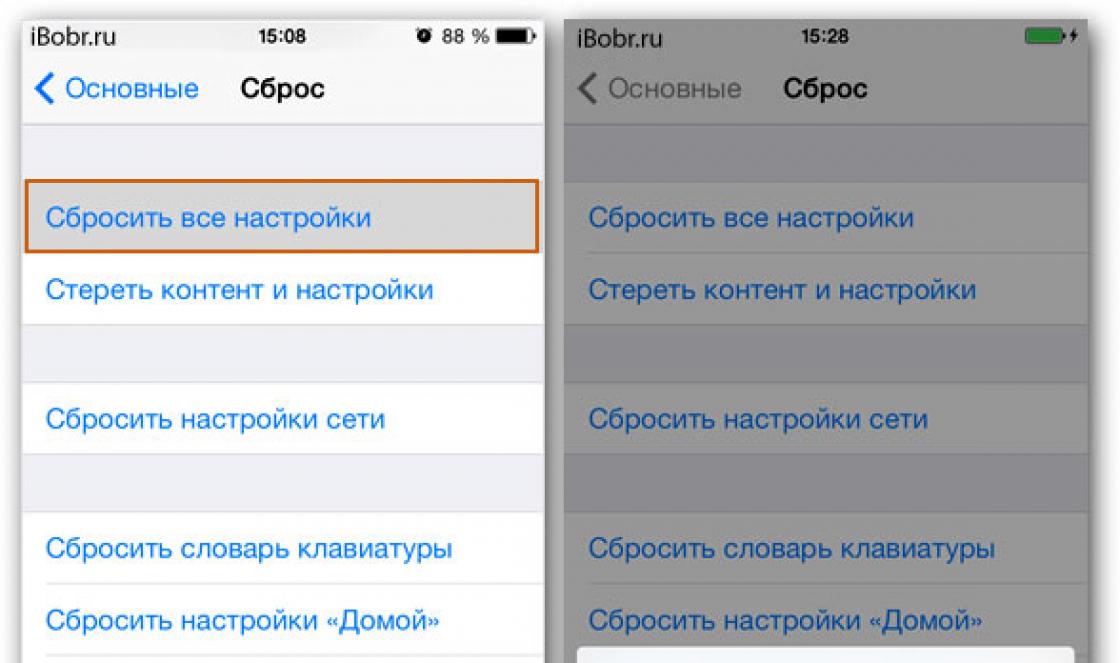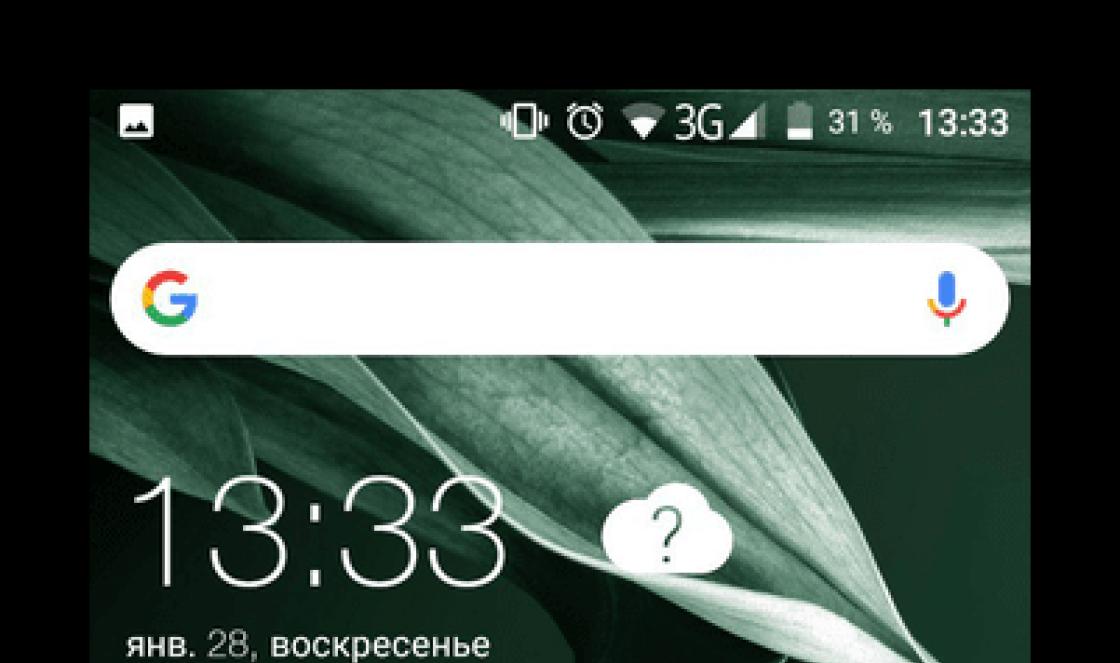smartphone, iOS 7, monoblock body, 4" screen, 1136x640, nano-SIM SIM card, GPS/AGPS/Glonass, Wi-Fi / 3G / LTE, dimensions 58.6 x 123.8 x 7.6 mm, weight 112 g
Functional and convenient smartphone Apple iPhone 5S 16Gb
Compact and lightweight
The smartphone is housed in a case measuring 58.6x123.8x7.6 mm. It fits easily into a clothing pocket or small bag, fits comfortably in the palm of your hand, providing convenient operation even with one hand.
With a bright screen
The colorful 4-inch diagonal IPS display pleases the eye with rich color reproduction and natural colors. With a resolution of 1136x640 pixels, it reproduces the picture in detail, allowing you to see all the nuances.
With a quality camera
The main camera of the smartphone with a resolution of 8 megapixels is equipped with a fast autofocus system and a bright flash. It allows you to take bright and clear photos in any external conditions, and record videos in high resolution 1920x1080 pixels.
With reliable information protection
A sensitive fingerprint scanner is built into the front panel of the smartphone. It will not allow strangers to access personal data and will quickly remove the lock from the screen after the owner touches it.
With a capacious battery
Battery Apple iPhone 5S 16Gb has a capacity of 1560 mAh. It will allow you to stay connected for 250 hours in standby mode and is designed for 10 hours of talk time.
iPhone 5S is equipped with the Apple A7 processor, the main feature of which is support for 64-bit commands. In addition, the iPhone 5S has an M7 motion coprocessor that continuously processes data from the smartphone's sensors. The "Home" button of the iPhone 5S, located under the display, has a built-in fingerprint scanner with a resolution of 500 ppi, capable of scanning subcutaneous layers. The design of the button has changed: there is no square in the center, and a steel ring surrounds the key. There is no need to press the key - it has become a touch key.
report a bugThe most anticipated smartphones of autumn 2013 according to ZOOM.CNews
The autumn IFA 2013 exhibition has recently died down, at which manufacturers of a wide variety of equipment showed their new products (and some released them). Smartphone manufacturers did not stand aside either - now we know what to expect before the end of the year. And today we will tell you about the most interesting of these new products.IPhone 5s has become the most common Apple smartphone in Russia, and this, despite the fact that after it Apple company has already released the next three generations. The previous iPhone 5 model was not far behind it. But what are the differences between these two smartphones? Let's find out.
External differences
Models 5 and 5s are almost the same in terms of appearance. The same dimensions are length, width, thickness and even weight.
They are distinguished by the button “ home" If in the early model it was just a concave mechanical button with a branded square inside, then in the 5s a Touch ID scanner was added to it. At one time, this was the starting point for almost all manufacturers to integrate a fingerprint scanner into their smartphones. 
Also at the back you can see another difference, this flash. The modified version of the regular “five” now has a dual flash LED. 
Another difference is color solutions to these models. IPhone 5 was presented in black and white. 
At 5s added golden color, and the black was changed to a lighter shade - gray. 
All this allowed us to take a fresh look at the same design and form factor of the smartphone, but still the most important differences are hidden inside the case.
Hardware differences
CPU and display
Specifications screen both smartphones have absolutely identical. This is famous Retina display with an aspect ratio of 16:9 and a resolution of 1136×640 and a density of 326 ppi, which, according to company representatives, is ideal for user perception.
The most main difference The difference between the two models being compared is the processor. To normal " five» the manufacturer supplied a processor with two cores A6 with a frequency of 1.3 GHz, but the company’s new chip was built into the subsequent version A7. They have the same frequency, but the most important difference in the new product is 64-bit processor architecture. The previous smartphone worked on 32-bit processor.
According to the company, this made it possible to increase the speed of work by as much as five times, and productivity was equal to personal computers. Another innovation was the built-in M7 coprocessor, he took over the monitoring of the operation of sensors such as an accelerometer, built-in compass and gyroscope. This unloaded the main processor and now the smartphone stopped “slowing down” under heavy load. The acquisition of such a coprocessor has opened up new opportunities for the use of fitness applications, including faster and more efficient operation of cards.
If you look at cameras, then in 5S the main camera was changed to a more advanced one. Megapixels were left in the same number, but the size of the pixel itself on the camera sensor was significantly reduced, and now it has become 1.5 µm. It was said that this would allow for brighter, more saturated photos both day and night. And as practice has shown, this is indeed the case.
The colors have become more natural without noise, the camera has begun to miss the white balance less often, in photographs you can see a decrease in disturbing glare, more details are visible in dark rooms, and if you need to shoot text from a white sheet of paper indoors, the text seems cleaner and clearer.
Here's a comparison of the photos. Left iPhone 5, right 5S:

iPhone 5


iPhone 5


iPhone 5


iPhone 5

As previously noted, the change also succumbed to flash. Instead of one cold LED, two were inserted into the 5S - cold and warm. As a result, the photographs became more natural and vibrant.
Also, due to the new, much more powerful processor, it has become faster work phase autofocus. Time focusing cameras per object decreased by half. Worked better too stabilization, photos have become easier to take, and videos are now less jerky and smoother. The high performance of the new hardware also allowed the camera to shoot four times slow-motion video at 120 fps.
The front cameras were left unchanged; in both cases it is the same 1.2 megapixel module.
Gadget memory
There were many rumors that the Apple company plans to introduce 128 GB memory in the new smartphone, but this remains a rumor. Everything remains in 5S without changes, the same 16, 32 and 64 GB of internal memory without expandability. Those for whom this was not enough could use cloud memory. Nothing has changed in random access memory, manufacturers still insist that 1 GB is enough for all the user’s needs.
Operating system and fingerprint scanner
In 2017, both smartphones can be updated to iOS 10.2.1, so there is no point in comparing them. As soon as the user connects to the Internet, he will be prompted to update to version 10 of the OS; the update “weighs” 2 GB. What differentiates these two smartphones is the presence of a fingerprint scanner and associated software features. The main feature of the 5S is that the phone unlocks when you press the home button, and you can also configure the scanner to use Apple Pay. But of course, the main condition for its use is that the finger must be dry and clean.
Battery and sound
 Regarding audio no changes, but in general users notice very high quality sound for a device such as a smartphone.
Regarding audio no changes, but in general users notice very high quality sound for a device such as a smartphone.
The iPhone 5 had a battery 1440 mAh, and the charge was not enough for anything, but in 5S they corrected the situation a little, increased it to 1570 mAh. What did it give? The smartphone has become more durable, the operating time has increased by about 20%, and now you can use the phone all day and charge it only at night. But this is only with careful use.
Model comparison table
| iPhone 5 | iPhone 5S | |
| Display | 4″, IPS, resolution 1136 x 640 pixels, 326 ppi | |
| CPU | Apple A6 | Apple A7 |
| RAM | 1 Gigabyte | 1 GB |
| Built-in memory | Use 16, 32 or 64 GB | 16/32/64 GB |
| Main camera | 8 MP, f/2.4 aperture, autofocus, led flash; 1080p video recording at 30 frames per second | 8 MP, f/2.2 aperture, 1.5 micron pixels, autofocus, dual True Tone LED flash, supports burst mode up to 10 frames per second; 1080p video recording at 30 fps, 720p Slow-Mo at 120 fps |
| Front-camera | 1.2 MP, video recording in 720p format and 30 frames per second | 1.2 MP, BSI sensor, 720p video recording at 30 frames per second |
| WiFi | 802.11 a/b/g/n | 802.11 a/b/g/n |
| Bluetooth | 4 | 4 |
| Sensors | Accelerometer, gyroscope, digital compass | Accelerometer, gyroscope, digital compass, M7 motion processor |
| Navigation | GPS/GLONASS | GPS/GLONASS |
| Connection | GSM/LTE or CDMA/LTE | GSM/LTE or CDMA/LTE |
| SIM card | nanoSim | nanoSim |
| Safety | Fingerprint login – Touch ID sensor | |
| operating system | iOS 6 (can be upgraded to iOS 10) | iOS 7 (can be upgraded to iOS 10) |
| Standby time | Up to 225 hours | Up to 250 hours |
| Dimensions | 123.8 x 58.6 x 7.6 mm | 123.8 x 58.6 x 7.6 mm |
| Weight | 112 g | 112 g |
| Frame | Aluminum (white, black) | Aluminum (“gold”, “silver”, “space gray”) |
| Battery | 1440 mAh | 1570 mAh |
What's the result?
Externally, the 5 and 5S are almost identical, but there are huge differences hidden inside them. This is a higher quality main camera, and twice as powerful processor, and battery, as well as many new functions that appeared thanks to the listed innovations. iPhone 5S is better in many ways previous version, but all this does not negate the fact that an ordinary “five” can be a good buy. And its price is lower.
iPhone 5S is equipped with the Apple A7 processor, the main feature of which is support for 64-bit commands. In addition, the iPhone 5S has an M7 motion coprocessor that continuously processes data from the smartphone's sensors. The "Home" button of the iPhone 5S, located under the display, has a built-in fingerprint scanner with a resolution of 500 ppi, capable of scanning subcutaneous layers. The design of the button has changed: there is no square in the center, and a steel ring surrounds the key. There is no need to press the key - it has become a touch key.
report a bugThe most anticipated smartphones of autumn 2013 according to ZOOM.CNews
The autumn IFA 2013 exhibition has recently died down, at which manufacturers of a wide variety of equipment showed their new products (and some released them). Smartphone manufacturers did not stand aside either - now we know what to expect before the end of the year. And today we will tell you about the most interesting of these new products.So, today we will talk about a topic that interests many Apple users. It's about iPhone sizes, or to be more precise, we will consider all models without exception.
Today, smartphones are made so large that many people want to know everything in detail down to the millimeter. The reason for this is probably the different size of hands and I want to immediately know how comfortable the phone will be.
The article will be structured as follows, you can simply go to the desired model and find out about its dimensions, or go to the table and compare this indicator with other models.
Dimensions of first generation iPhones, 3G, 3GS
You can’t do without the very first iPhone, because it all began with them and this is part of history. Sometimes you come across people who use such phones and are completely satisfied with them.
Thanks to the small screen and compact body, the size of these smartphones was incredibly small. People with any hand size could use them, if you know what I mean.
- first generation: 115.5×61×11.6 mm;
- 3G: 115.5×62.1×12.3 mm;
- 3GS: 115.5×62.1×12.3 mm.
Oddly enough, at that time these were considered incredibly large gadgets and a lot of people wanted to get their hands on them. The requirements were completely different.
Dimensions iPhone 4, 4S
These two representatives were the last to be equipped with 3.5-inch screens. Nevertheless, they managed to gain quite a lot of popularity at that time. 
Despite the very heavy weight, the glass case captivated quite a lot of people with its appearance and smartphones were sold like hot cakes.
- 4: 115.2×58.66×9.3 mm;
- 4S: 115.2x58.6x9.3 mm.
Steve Jobs said that this is the ideal size for a phone and that nothing larger is needed. But as it turned out in reality, the market began to dictate completely different rules.
Sizes of iPhones 5, 5S, 5C, SE
Although slightly, the size of smartphones has grown. The screens became 4 inches, but the design was still recognizable and elements of previous models were present. 
The smartphone received the most dramatic changes at the back, because now it was solid aluminum and the phone began to look completely different.
- 5: 58.6×123.8×7.6 mm;
- 5S: 59.2×124.4×8.97 mm;
- 5C: 58.6×123.8×7.6 mm;
- SE: 58.6×123.8×7.6 mm.
There were a lot of memes about the extension of the previous generation phone. But as it turns out later, the 5S will become one of the most successful in design.
Dimensions iPhone 6, 6 PLUS, 6S, 6S PLUS
The time has come for global changes and Apple had to completely adapt to the market, real shovels began to appear. 
We forget about the comfortable size of smartphones, because now the main criterion when choosing is the large screen. People are starting to sew new pockets in their pants.
- 6: 138.1×67×6.9 mm;
- 6 PLUS: 158.1×77.8×7.1 mm;
- 6S: 138.3×67.1×7.1 mm;
- 6S PLUS: 158.1×77.8×7.3 mm.
But as practice has shown, despite the not very successful design, everyone was happy to buy Apple and this line is in demand to this day.
Dimensions of iPhones 7, 7 PLUS
A new generation of smartphones has begun to appear, and as we see, there have been no significant changes in screen size, much less size. 
They just changed the design a little and now it has become more neat. New colors have been added and many small interesting changes have appeared.
- 7: 138.3×67.1×7.1 mm;
- 7 PLUS: 158.2×77.9×7.3 mm.
For now, growth has stopped and it is very interesting what will happen next. After all, Apple likes to dictate its own rules, to which many manufacturers must adapt.
Comparison of all iPhone sizes in centimeters and inches
Finally, I would like to make a large comparison table, which will show the sizes of all iPhones in centimeters and inches.
Most publications use millimeters, so as per tradition, I will use them too. To make comparison easier, here are a couple of interesting points.
There are 10 millimeters in 1 centimeter, 1 inch equals 2.54 centimeters and, logically, in 1 inch we have 25.4 millimeters.
Here is the plate itself, in which the first indicator is in mm, and the second in inches:
| Model | Height | Width | Thickness |
| 1st generation | 115 mm (4.5 in) | 61 mm (2.4 in) | 11.6 mm (0.46 in) |
| 3G | 115.5 mm (4.55 in) | 62.1 mm (2.44 in) | 12.3 mm (0.48 in) |
| 3GS | 115.5 mm (4.55 in) | 62.1 mm (2.44 in) | 12.3 mm (0.48 in) |
| 4 | 115.2 mm (4.54 in) | 58.6 mm (2.31 in) | 9.3 mm (0.37 in) |
| 4S | 115.2 mm (4.54 in) | 58.6 mm (2.31 in) | 9.3 mm (0.37 in) |
| 5 | 123.8 mm (4.87 in) | 58.6 mm (2.31 in) | 7.6 mm (0.30 in) |
| 5C | 124.4 mm (4.90 in) | 59.2 mm (2.33 in) | 8.97 mm (0.353 in) |
| 5S | 123.8 mm (4.87 in) | 58.6 mm (2.31 in) | 7.6 mm (0.30 in) |
| S.E. | 123.8 mm (4.87 in) | 58.6 mm (2.31 in) | 7.6 mm (0.30 in) |
| 6 | 138.1 mm (5.44 in) | 67.0 mm (2.64 in) | 6.9 mm (0.27 in) |
| 6 PLUS | 158.1 mm (6.22 in) | 77.8 mm (3.06 in) | 7.1 mm (0.28 in) |
| 6S | 138.3 mm (5.44 in) | 67.1 mm (2.64 in) | 7.1 mm (0.28 in) |
| 6S PLUS | 158.2 mm (6.23 in) | 77.9 mm (3.07 in) | 7.3 mm (0.29 in) |
| 7 | 138.3 mm (5.44 in) | 67.1 mm (2.64 in) | 7.1 mm (0.28 in) |
| 7 PLUS | 158.2 mm (6.23 in) | 77.9 mm (3.07 in) | 7.3 mm (0.29 in) |
This is roughly what everything looks like and now you can comfortably compare all the necessary indicators. As for me, everything is done very conveniently.





